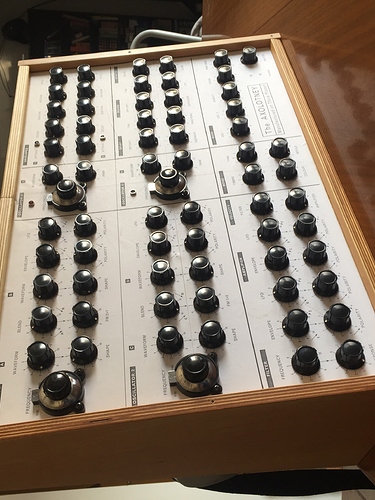I also use the Akai Midimix with the Axoloti (because it seemed to be the cheapest (most pots/$$) "pot box" at the time) and I would expect a "send all" button on any such device. I can't believe the Doepfer engineers didn't foresee this situation.
Maybe the USB64 does a "send all" immediately after power-on? Have you tried turning on the Axoloti first and then, after a few seconds (when the Axoloti has started the patch), the USB64?
If that doesn't help, I can think of a hardware hack to force the USB64 to do a "send all": insert a switch or button into the 5V line to the pots. It must be a button that breaks the contact when pressed, not the ordinary type. If you interrupt the 5V line to the pots, all inputs of the USB64 go to 0V, so all CCs go to zero. When the 5V supply is restored, all inputs go back to their regular values, so the USB64 has to send out CC messages for all knobs that are not currently in the zero position. So this switch/button can force something like a "send all"; the Axoloti patch just has to start with all knobs defaulting to zero.



 I’ll dig with attention hoping go further
I’ll dig with attention hoping go further 
